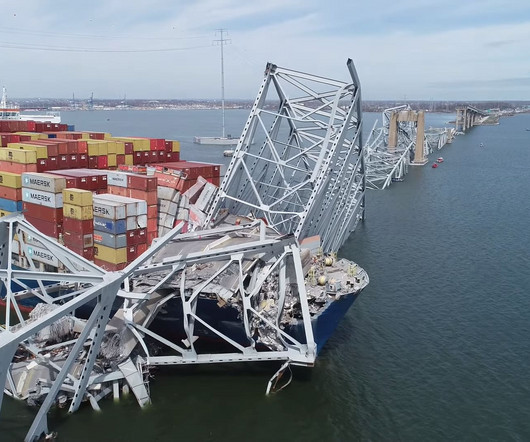This Week in Logistics News (March 23 – 29)
Logistics Viewpoints
MARCH 29, 2024
In the early morning hours of April 26, at approximately 1:35am, a cargo ship leaving Baltimore Harbor struck the Francis Scott Key Bridge, triggering a catastrophic collapse of the 1.6-mile-long mile-long span. The collapse sent vehicles and people plunging into the water. Senate for further consideration.
















Let's personalize your content